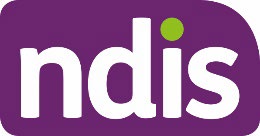
FOI 24/25-0223
Focussed response
Document 4
OFFICIAL
For Internal Use Only
Exercise physiology and stroke
The content of this document is OFFICIAL.
Please note:
The research and literature reviews collated by our TAB Research Team are not to be shared
external to the Branch. These are for internal TAB use only and are intended to assist our
advisors with their reasonable and necessary decision-making.
Delegates have access to a wide variety of comprehensive guidance material. If Delegates
require further information on access or planning matters, they are to call the TAPS line for
advice.
The Research Team are unable to ensure that the information listed below provides an
accurate & up-to-date snapshot of these matters
Research question: What is the evidence for the use of Exercise Physiology in addition to
Neurological Physiotherapy for adults with Stroke?
What frequency of Exercise Physiology direct intervention has evidence (when provided in
addition to Neurological Physiotherapy)?
Can Exercise Physiology programs for adults with Stroke be effectively delegated for
implementation by others, implemented through a home program, and/or implemented
through group programs?
Date: 10/08/2023
Requestor: s47F - personal privacy
Endorsed by: Katrin R
s47F - personal
Researcher: Aaron Hs47F - personal priva
Cleared by: Aaron Hs47F - personal priva
Exercise and stroke
Page 1 of 6
OFFICIAL
Page 1 of 6
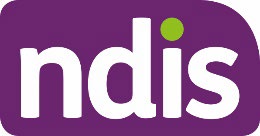
FOI 24/25-0223
Focussed response
Document 4
OFFICIAL
For Internal Use Only
1. Contents
Exercise physiology and stroke .................................................................................................. 1
1.
Contents ....................................................................................................................... 2
2.
Summary ...................................................................................................................... 2
3.
Scope of practice .......................................................................................................... 3
4.
Efficacy ......................................................................................................................... 3
4.1 Delivery ...................................................................................................................... 4
4.2 Dosage ...................................................................................................................... 4
5.
References ................................................................................................................... 5
2. Summary
Exercise is likely effective to improve outcomes for people after stroke. There is evidence for
the effectiveness of different forms of exercise including unassisted walking, treadmil training,
cardiorespiratory exercise, resistance training, pilates, seated exercise and others.
There is less clear evidence regarding dosage and delivery of exercise programs. There is
some evidence that exercise programs of at least 12 weeks, delivered for between 120 and
150 minutes per week, are more effective than shorter programs. However, the evidence is of
low certainty and most studies reviewed were unable to draw conclusions around dosage.
Home-based programs may achieve similar outcomes to centre- or hospital-based programs
for people with stroke, though studies show inconsistent results. Home-based programs may
also be supervised by an allied health professional via telehealth. Therefore, evidence for
home-based programs may not equate to evidence for unsupervised exercise activity.
Both exercise physiologists and neurophysiotherapists can develop and prescribe exercise
programs. Most interventions reviewed were delivered by a physiotherapist. Few studies
specified whether the intervention was developed or supervised by either a specialist
neurophysiotherapist or by an exercise physiologist. No evidence was found regarding the
comparative efficacy of interventions provided by an exercise physiologist or
neurophysiotherapist.
Exercise and stroke
Page 2 of 6
OFFICIAL
Page 2 of 6
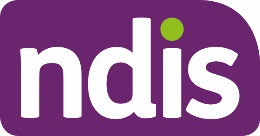
FOI 24/25-0223
Focussed response
Document 4
OFFICIAL
For Internal Use Only
3. Scope of practice
Neurological physiotherapy or neurophysiotherapy is a specialty within physiotherapy
focussing on management of neurological conditions. As physiotherapists, they can diagnose
and assess conditions, offer hands on treatment, prescribe tailored exercise programs,
develop treatment plans and offer education about symptoms (Allied Health Professionals
Australia (AHPA), n.d a; Health Direct, 2021; Very Wel Health, 2021).
In the context of neurological conditions, exercise physiologists can develop specialised
exercise programs to address fitness, strength and mobility within the capacity of the client
(AHPA, n.d b).
There is overlap between the role of the physiotherapist and exercise physiologist. They can
both prescribe exercise programs, though a physiotherapist is also trained in manual
techniques. A physiotherapist can diagnose conditions whereas an exercise physiologist will
usually be referred to after diagnosis (AHPA, n.d a-b; Health Direct, 2021; Very Well Health,
2021).
4. Efficacy
The type of exercise as well as the environment, supervision, use of mechanical devices or
assistive technology, frequency and duration of exercise can influence its efficacy for people
with stroke.
A 2020 Cochrane review of physical fitness interventions found:
cardiorespiratory fitness training, particularly involving walking, can improve fitness,
balance and walking after stroke. The improvements in cardiorespiratory fitness may
reduce the chance of stroke hospitalisation by 7%. Mixed training improves walking
ability and improves balance. Strength training may have a role in improving balance.
So, overall it seems likely that people with stroke are likely to benefit the most from
training that involves cardiorespiratory training and that involves some walking.
However, there was not enough information to draw reliable conclusions about the
impact of fitness training on other areas such as quality of life, mood, or cognitive
function. Cognitive function is under-investigated despite being a key outcome of
interest for stroke survivors (Saunders et al, 2020, p.2).
More recently, systematic reviews have shown possible effects of exercise programs on
cognitive and motor skills, mobility, upper and lower limb function, performance in daily
activities, bone health and quality of life (Amanzonwe et al, 2023; Cronin et al, 2023; Mackie &
Eng, 2023; Zhang et al 2023; Mah et al, 2023; Westlake et al, 2023; Wen & Wang, 2022;
Sallehudin et al, 2022; Ali et al, 2021). There is less clear evidence for the comparative
efficacy of different types of exercise or exercise program.
Exercise and stroke
Page 3 of 6
OFFICIAL
Page 3 of 6
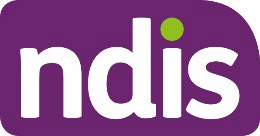
FOI 24/25-0223
Focussed response
Document 4
OFFICIAL
For Internal Use Only
4.1 Delivery
Much of the efficacy data is based on controlled trials which compare specific types of exercise
with standard rehabilitation treatment after stroke. This standard treatment often also includes
an exercise component delivered or monitored by a physiotherapist. A handful of studies
explicitly note neurophysiotherapy used as an active control (Mackie & Eng, 2023; Zhang et al,
2023) though no studies were found that compared the delivery of the same exercise therapy
by different professions (e.g. physiotherapy compared to exercise physiology or physiotherapy
plus exercise physiology compared to physiotherapy alone).
Different formal or informal supports can provide varying degrees of supervision for exercise
programs. The level and type of supervision as well as the environment in which the program
is completed, may influence how effective the intervention is.
Home based exercise programs have been shown to improve outcomes for people with stroke.
Evidence varies when comparing efficacy with hospital or clinic-based exercise programs. Ali
et al (2021) find more consistent benefits to health-related quality of life for home-based
exercise programs. There is evidence that home-based exercise programs have similar
efficacy compared with centre-based programs in improving cognition, mood, arm activity,
balance, walking speed, mobility and participation (Nascimento et al, 2022; Westlake et al,
2023; also refer to RES 233 Virtual reality as a support tool for further information on virtual
reality exercise programs for people with stroke). Efficacy of home-based programs may not
indicate the value of unsupervised exercise as many such programs stil involve supervision
via virtual reality or telehealth (Ali et al, 2021).
A 2016 Cochrane review found very low to moderate quality evidence that exercise programs
delivered with the assistance of a carer or family member could improve outcomes for people
with stroke.
4.2 Dosage
Most systematic reviews considered here found insufficient evidence to recommend an optimal
dose of exercise therapy (Zhang et al, 2023; Mah et al, 2023; Wen & Wang et al, 2022;
Saunders et al, 2020). However, there is some evidence that programs longer than 12 weeks
that include 120-150 minutes of training per week are more effective than shorter programs
(Amanzonwe et al, 2023; Ali et al, 2021; Saunders et al, 2020). Due to the progressive nature
of many exercise programs, dosage is highly variable by design. Saunders et al offer this
assessment:
With regard to dose, the reality of progression is that dose is not fixed and should
constantly change to drive adaptations. In those who respond more, progression may
occur faster whilst being more conservative in those who adapt slower. A 'one-size-fits-
all' dose, particularly in terms of intensity and progression, does not seem realistic and
should instead be personalised. With regard to a starting dose, perhaps this is less
Exercise and stroke
Page 4 of 6
OFFICIAL
Page 4 of 6

FOI 24/25-0223
Focussed response
Document 4
OFFICIAL
For Internal Use Only
important because progression wil move things on quickly; just doing something wil be
a good start and help familiarise patients with what is involved (2020, pp.43-44).
5. References
Ali, A., Tabassum, D., Baig, S. S., Moyle, B., Redgrave, J., Nichols, S., McGregor, G., Evans,
K., Totton, N., Cooper, C., & Majid, A. (2021). Effect of Exercise Interventions on
Health-Related Quality of Life After Stroke and Transient Ischemic Attack: A Systematic
Review and Meta-Analysis.
Stroke,
52(7), 2445–2455.
https://doi.org/10.1161/STROKEAHA.120.032979
Al ied Health Professions Australia. (n.d. a).
Physiotherapy. https://ahpa.com.au/allied-health-
professions/physiotherapy/
Al ied Health Professions Australia. (n.d. b).
Exercise Physiotherapy.
https://ahpa.com.au/al ied-health-professions/exercise-physiology/
Amanzonwé,
E.
R.,
Tedesco
Triccas,
L.,
Codjo,
L.,
Hansen,
D.,
Feys,
P.,
&
Kossi,
O.
(2023).
Exercise
dosage
to
facilitate
the
recovery
of
balance,
walking,
and
quality
of
life
after
stroke.
The South African journal of physiotherapy,
79(1),
1846.
https://doi.org/10.4102/sajp.v79i1.1846
Cronin,
E.,
Broderick,
P.,
Clark,
H.,
&
Monaghan,
K.
(2023).
What
are
the
effects
of
pilates
in
the
post
stroke
population?
A
systematic
literature
review
&
meta-analysis
of
randomised
controlled
trials.
Journal of bodywork and movement therapies,
33,
223–
232.
https://doi.org/10.1016/j.jbmt.2022.09.028
Health Direct. (2022).
Allied Heath. https://www.healthdirect.gov.au/allied-health
Health Direct. (2021).
Physiotherapy. https://www.healthdirect.gov.au/physiotherapy
Mackie,
P.,
&
Eng,
J.
J.
(2023).
The
influence
of
seated
exercises
on
balance,
mobility,
and
cardiometabolic
health
outcomes
in
individuals
living
with
a
stroke:
A
systematic
review
and
meta-analysis.
Clinical rehabilitation,
37(7),
927–941.
https://doi.org/10.1177/02692155221150002
Mah,
S.
M.,
Goodwill,
A.
M.,
Seow,
H.
C.,
&
Teo,
W.
P.
(2022).
Evidence
of
High-Intensity
Exercise
on
Lower
Limb
Functional
Outcomes
and
Safety
in
Acute
and
Subacute
Stroke
Population:
A
Systematic
Review.
International journal of environmental
research and public health,
20(1),
153.
https://doi.org/10.3390/ijerph20010153
Nascimento,
L.
R.,
Rocha,
R.
J.,
Boening,
A.,
Ferreira,
G.
P.,
&
Perovano,
M.
C.
(2022).
Home-based
exercises
are
as
effective
as
equivalent
doses
of
centre-based
exercises
for
improving
walking
speed
and
balance
after
stroke:
a
systematic
review.
Journal of
physiotherapy,
68(3),
174–181.
https://doi.org/10.1016/j.jphys.2022.05.018
Sallehuddin,
H.,
Ong,
T.,
Md
Said,
S.,
Ahmad
Tarmizi,
N.
A.,
Loh,
S.
P.,
Lim,
W.
C.,
Nadarajah,
R.,
Lim,
H.
T.,
Mohd
Zambri,
N.
H.,
Ho,
Y.
Y.,
&
Shariff
Ghazali,
S.
(2022).
Exercise and stroke
Page 5 of 6
OFFICIAL
Page 5 of 6
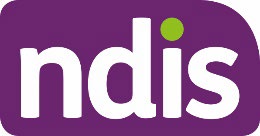
FOI 24/25-0223
Focussed response
Document 4
OFFICIAL
For Internal Use Only
Non-pharmacological
interventions
for
bone
health
after
stroke:
A
systematic
review.
PloS one,
17(2),
e0263935.
https://doi.org/10.1371/journal.pone.0263935
Saunders,
D.
H.,
Sanderson,
M.,
Hayes,
S.,
Johnson,
L.,
Kramer,
S.,
Carter,
D.
D.,
Jarvis,
H.,
Brazzelli,
M.,
&
Mead,
G.
E.
(2020).
Physical
fitness
training
for
stroke
patients.
The
Cochrane Database of Systematic Reviews,
3(3),
CD003316.
https://doi.org/10.1002/14651858.CD003316.pub7
Very Well Health. (2021).
Neurological Physical Therapy: Conditions Treated, Uses.
https://www.verywellhealth.com/neurological-physical-therapy-5189468
Vloothuis, J. D., Mulder, M., Veerbeek, J. M., Konijnenbelt, M., Visser-Meily, J. M., Ket, J. C.,
Kwakkel, G., & van Wegen, E. E. (2016). Caregiver-mediated exercises for improving
outcomes after stroke.
Cochrane Database of Systematic Reviews, 12, CD011058.
https://doi.org/10.1002/14651858.CD011058.pub2
Wen,
H.,
&
Wang,
M.
(2022).
Backward
Walking
Training
Impacts
Positive
Effect
on
Improving
Walking
Capacity
after
Stroke:
A
Meta-Analysis.
International journal of environmental
research and public health,
19(6),
3370.
https://doi.org/10.3390/ijerph19063370
Westlake,
K.,
Akinlosotu,
R.,
Udo,
J.,
Goldstein
Shipper,
A.,
Waller,
S.
M.,
&
Whitall,
J.
(2023).
Some
home-based
self-managed
rehabilitation
interventions
can
improve
arm
activity
after
stroke:
A
systematic
review
and
narrative
synthesis.
Frontiers in neurology,
14,
1035256.
https://doi.org/10.3389/fneur.2023.1035256
Zhang,
Y.,
Qiu,
X.,
Chen,
J.,
Ji,
C.,
Wang,
F.,
Song,
D.,
Liu,
C.,
Chen,
L.,
&
Yuan,
P.
(2023).
Effects
of
exercise
therapy
on
patients
with
poststroke
cognitive
impairment:
A
systematic
review
and
meta-analysis.
Frontiers in neuroscience,
17,
1164192.
https://doi.org/10.3389/fnins.2023.1164192
Exercise and stroke
Page 6 of 6
OFFICIAL
Page 6 of 6





